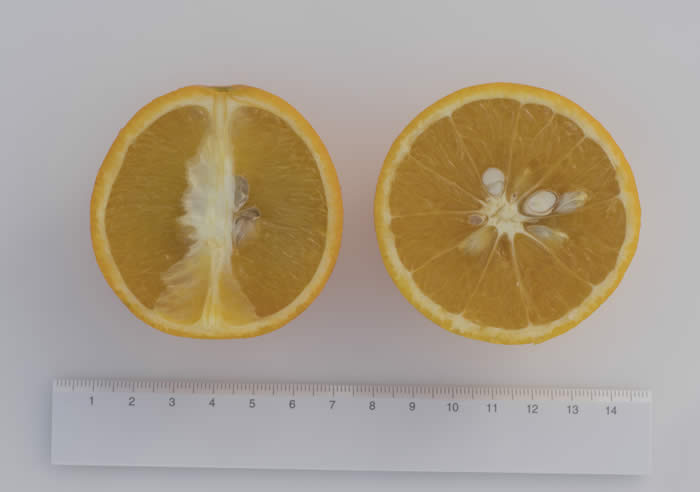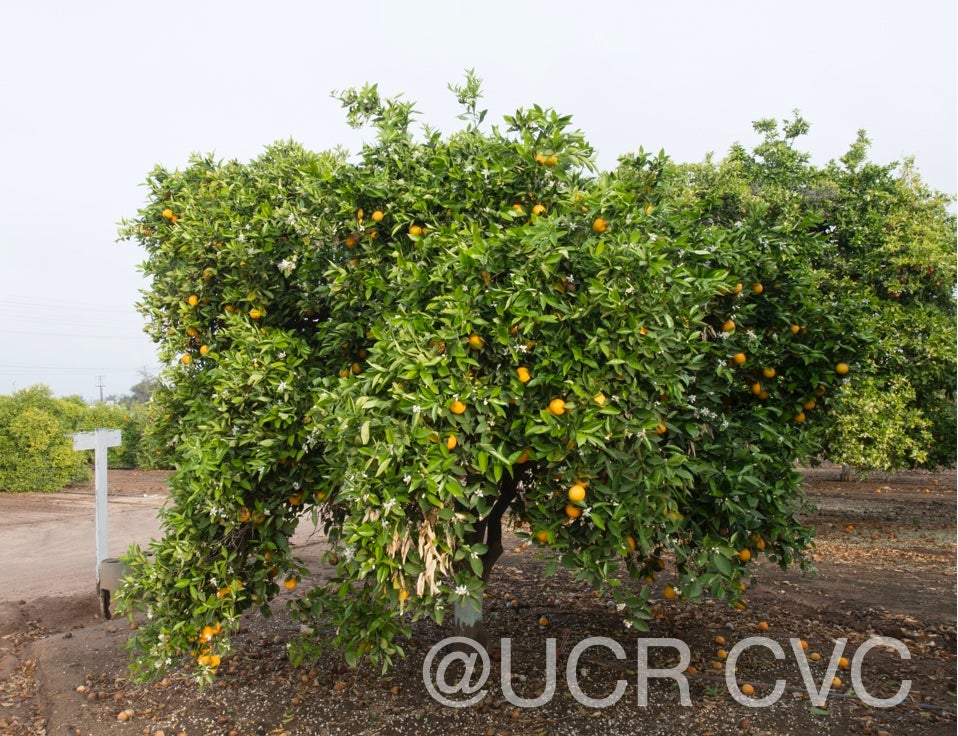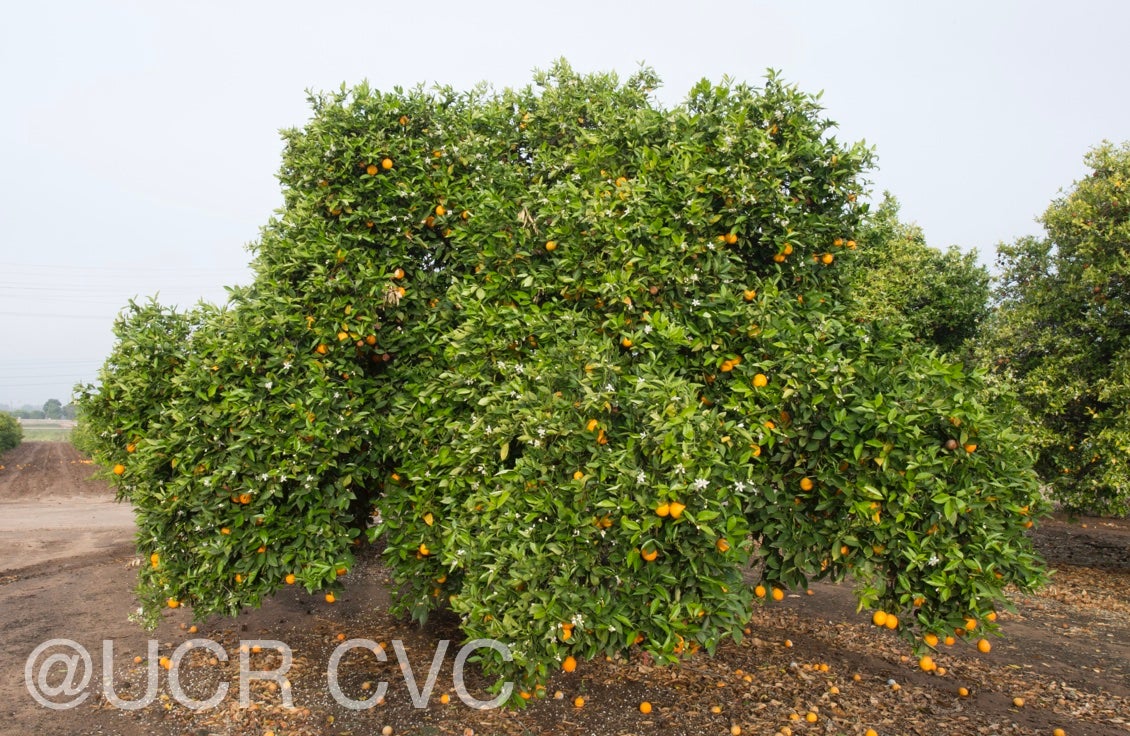Citrus sinensis (L.) Osbeck RUTACEAE
CRC 591
PI 539650
Source
Received as budwood from the Rubidoux Tract variety block, buds from tree 63, 1914.
Parentage/origins
Parents unknown.
Rootstocks of accession
Carrizo citrange, C-35 citrange
Season of ripeness at Riverside
November to January
Notes and observations
This accession had seedling yellows, removed by thermotherapy (Thermo 1273-31).--EMN 1985.
3/23/1987, EMN: Small sized fruit, rind fairly thin.
2/08/1988, EMN: Fruit compared to C.I. description and found to fit quite well. So this probably really is Paperrind.
Description from The Citrus Industry Vol. 1 (1967)
"The fruit of this midseason California variety is small-sized, moderately seedy, juicy, and well-flavored. The rind is very thin, leathery, and smooth. The tree is vigorous, upright, and productive.
Said to have originated on the Island of St. Michael, Azores Islands, presumably as a seedling, this variety was named and introduced about 1870 by T. A. Garey, pioneer citrus nurseryman of Los Angeles. Along with Garey's Mediterranean Sweet, which ripens earlier, it soon attained importance as a midseason variety filling the gap between the early Washington navel and the late Valencia oranges. As the California industry expanded with overlapping production of the latter two superior varieties, the popularity of Paperrind and Mediterranean Sweet declined and both have now virtually disappeared. Although widely distributed to other countries, Paperrind seems to have achieved importance elsewhere only in Mexico, where it is known as San Miquel."
Availability
Not commercially available in California.
USDA Germplasm Resources Information Network page for St. Michael Paperrind sweet orange



